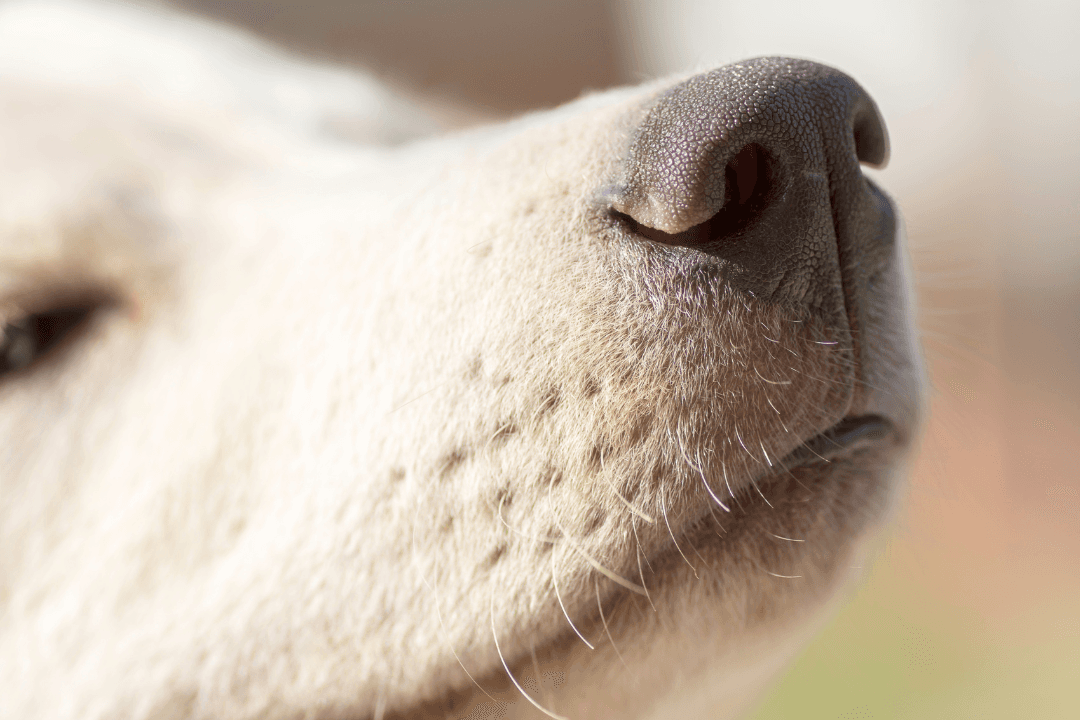Activate your dog with nosework
As a dog owner, it is important to ensure that your beloved dog receives both physical and mental stimulation. An exciting and fun way to activate your dog is through the nosework activity. In this article you can read more about what nosework is and how you and your dog can start training or competing.
What is nosework?
Training nosework at home
Compete in nosework
Why nosework is both useful and fun
What is nosework?
As the name indicates, nosework is a sport where the dog gets to work with its head and nose, which is something that most dogs love. This dog sport originally comes from dog shelters in the United States, where it was necessary to come up with ways to activate the dogs. The interest of this sport has grown a lot and in Sweden it became an official dog sport in 2017.
What the activity is all about is that the dog, together with its handler, must find a specific scent in different places. If you want to practice nosework for fun, you can let the dog search for almost anything. If you are instead interested in competing, the first scent that the dog must learn to find is eucalyptus.
Training nosework at home
For those of you who are curious about starting to train nosework with your dog, we have created a guide with 10 steps that go through how you can get started:
Step 1: Equipment
Before you start, make sure you have everything you need:
Dog treats or other rewards, Lassie dog parents recommend these treats.
Hydrolate (scent)
Container - for example a shoe box or other box
Collar/harness and leash (optional)
Step 2: Introduce the fragrance - "pairing"
Start by introducing your dog to the chosen scent. For example, use a small cotton ball or a furniture pad and add a small drop of the hydrolate. Let your dog sniff and reward each time the dog sniffs on the scent to create a positive association.
Step 3: Select a search area
Choose a quiet place in your home where there are as few distractions as possible. This sets good conditions for the dog to understand its task.
Step 4: Prepare container
Take a bunch of shoe boxes and place the scent in one of them. Place the boxes in your chosen search area and make sure the cartons are half open so the dog can easily access the scent.
Step 5: Time to apply
If you need to, you can use a leash on your dog to lead it to the search area. Then let it explore the area and the boxes on its own.
Step 6: Reward success
When the dog comes to the box with the scent, reward properly with both treats and verbally. It is in this situation that you want to create a positive feeling and joyful moment for the dog when it manages to find the right spot. Use words such as "search" or "find" so that the dog understands that it is time to activate the nose.
Step 7: Progressively harder
As your dog gets better at searching, you can make it a little more difficult. For example, you can place the boxes in places harder to reach, increase the number of boxes, use a larger room or switch to a new scent.
Step 8: Add challenges
Gradually, you can also make the training more difficult by closing the boxes or placing them in a chest of drawers. This will force the dog to give some kind of signal when it finds the correct container.
Step 9: Refine signal
Now it is time to teach your dog to mark when he has found the scent. Many use “sit” or “lie down” as a mark, but some dogs develop their own unique signal. Make sure you are consistent when teaching this and reward the correct mark and signal.
Step 10: Practice, practice and practice!
Practice makes perfect. Be sure to practice nosework regularly with your dog and gradually increase the difficulty. When you and your dog have become more or less professionals at indoor searching, you can start practicing nosework outdoors. Go to a park, field, or other environment where there are more distractions.
Compete in Nosework
When it comes to competing in nosework, there are three different classes: NW1, NW2 and NW3. In each class, there is a specific scent that the dog must find and these consist of hydrolat, which is a water solution. In the first class it is hydrolate of eucalyptus, in the second bay leaf and in the third lavender. In each class there are four moments which are:
Container search - Here the dog must search for the scent that is in the container, for example it could be boxes or luggage.
Indoor search - Here the dog must search for the scent inside buildings or rooms, navigating through furniture and other obstacles.
Outdoor search - Here the dog searches for the scent outdoors such as in a park or field. Here there are more distractions such as other natural scents.
Vehicle search - Here the dog searches for a scent hidden inside or around a vehicle. This could include cars, trucks or other automobiles
The dog handler must work closely with his dog and use both voice and body language to lead his dog. The dog, in turn, must communicate to its handler when it has found the scent through a marking, which can be sitting or lying down at the find.
Before you can start competing with your dog, you must complete and pass a scent test. To be allowed to do this scent test, the dog must be at least 10 months old.
Why nosework is both useful and fun
Mental simulation:
Nosework activates the dog and challenges it to find and follow scent trails. Activating your dog is important because, among other things, it can help reduce anxiety and destructive behaviors, which also makes nosework an activity suitable for dogs of all ages.
Physical exercise: Although nosework is largely a mental activity, it also encourages physical activity.
Builds self-confidence: When the dog locates a scent, it strengthens the dog's self-confidence, which can have a positive impact on the dog's behavior in general.
Relationship building: Since nosework requires cooperation between handler and dog, it is an activity that helps build a strong bond as they work together to solve a task.
Suitable for all dogs and handlers: Just as nosework is suitable for dogs of all sizes, breeds and ages, it is also an activity suitable for dog handlers of all ages.
Anywhere: Nosework is something you can practice pretty much anywhere and anytime. Perfect to do on days when the weather is worse.
For more tips on how to activate your dog, you can read more here.
Good luck!



